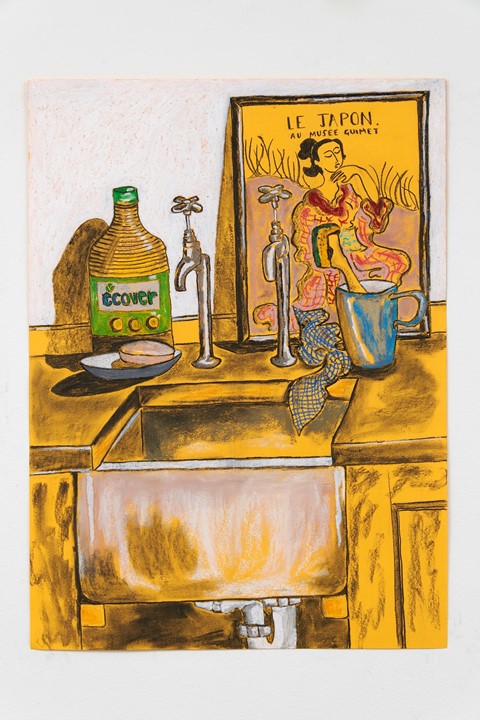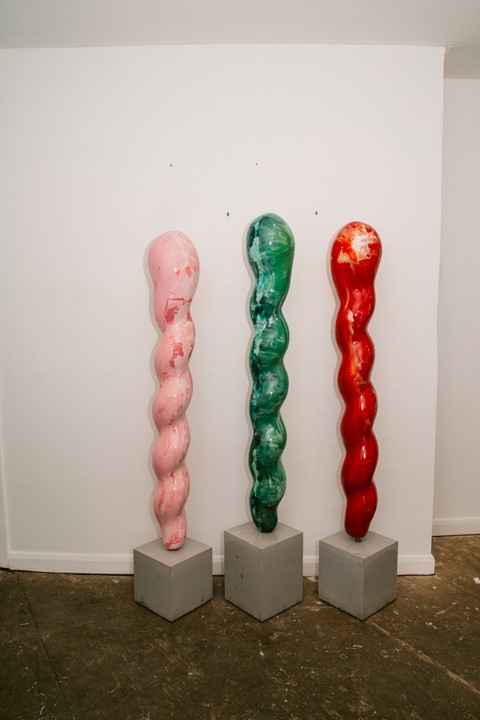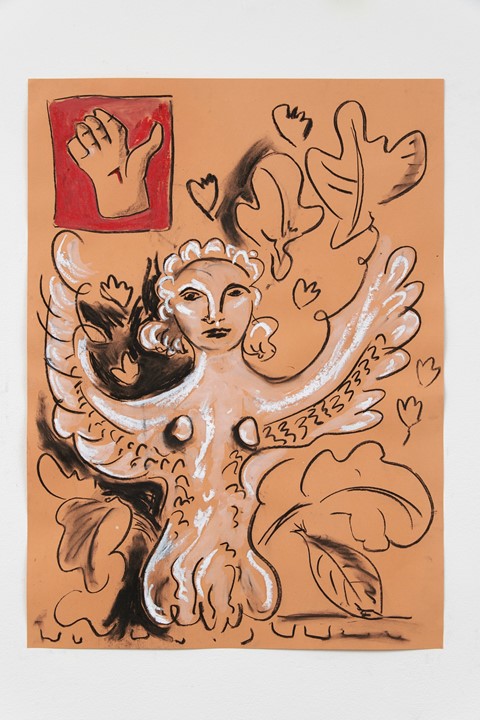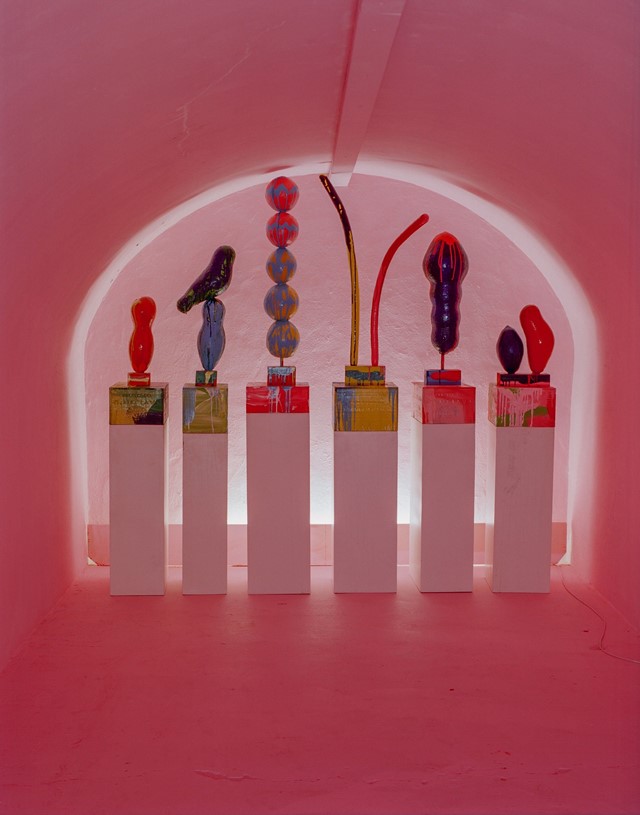Christabel MacGreevy’s textural mixed-media works are a riff on the symbols of femininity – from ancient fertility figurines to the kitchen sink
Hungry, bodily and a little grotesque, Glut is the perfect title for Christabel MacGreevy’s latest exhibition at LAMB Arts. Inspired in part by Virginia Woolf’s novel Orlando and its subversion of gender conventions, this texturally rich collection, including oil pastels, sculpture and embroidery, presents an eclectic iconography of feminine associations from sinks to figurines to ancient symbols of fertility, united by playful irony and a vivid colour palette.
In the first room, three vibrant paintings of sinks surround a large embroidered wall hanging of a female nude, laying out the exhibition’s thematic intention in their clear allusion to traditionally feminine spaces. But MacGreevy goes beyond a simple commentary on the domestic, explaining that she was attracted to the idea of “a big gunky hole at the centre of the kitchen that’s almost anatomical, but also cleansing and purifying. You wash everything away down that gunky hole and it’s all gone”. The nude’s spread legs playfully reinforce this allusion to a voracious feminine appetite that is at once sacred and monstrous.

While studying at Central Saint Martins, MacGreevy was uninspired by the big metallic pieces her peers on the sculpture course were making – “no one wants to see another macho sculpture made out of welded stumps,” she says. Instead, she chose to explore contrasting forms of expression frequently looked down on by the art establishment, like the traditionally feminine embroidery, powerfully reclaimed by artists like Judy Chicago and Tracey Emin, both of whom MacGreevy cites as influences. Her fascination with folk art also led her to look outside the art school bubble to learn new techniques. “I did a really funny quilting course with a bunch of old ladies in South London, it was very cosy. It’s about trying to find another way of expressing things, it’s another tactile thing to cling on to and experiment with. Fuck what everyone thinks is cool because it doesn’t matter,” she says. “When it’s your own and it’s authentic to you then that’s what’s important.”

This emphasis on tactility comes into its own in the gallery basement, a vaulted space that has been painted a pale pink and filled with sculptures. These abstract, organic forms – some papier-mâché, others cast in resin and concrete – are all painted in a lively palette. Covered in paint drips and with shiny, viscous-looking surfaces and phallic shapes, and in keeping with the theme of a sexual iconography; as a group, these pieces present as the contents of the exhibition’s own “gunky hole”. “They’re pleasing, they’re sexual but they’re also organic, they’re bodies, they’re body parts, they’re the space in between bodies,” says MacGreevy.

A series of colourful oil pastels inspired by objects in the British Museum continues this thematic interest in talismans of sexuality. These emerged from what MacGreevy describes as “an emotional rather than an academic response” to wandering amongst the museum’s hidden treasures. She noticed that certain symbols repeated across ancient civilisations, often presenting femininity as “quite sinister, powerful, subversive, a bit frightening.” For the artist, this is what’s interesting in terms of deconstructing gender, “looking at not the obvious assumptions but something a bit creepier”. Translating these figures from their cabinets onto paper infuses them with a new lease of life, offering them a different context and reminding us how the visual arts can capture certain notions that vibrate across millennia. These translations are often tied to sexuality, a basic human principle the eternal relevance of which Woolf explores in Orlando, with its time travelling, gender nonconforming protagonist.
Glut runs at LAMB Arts, Mayfair until June 9, 2018.
